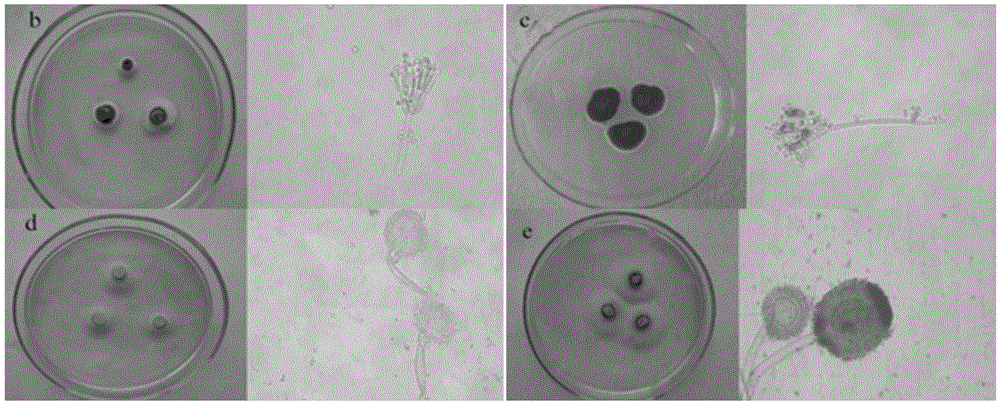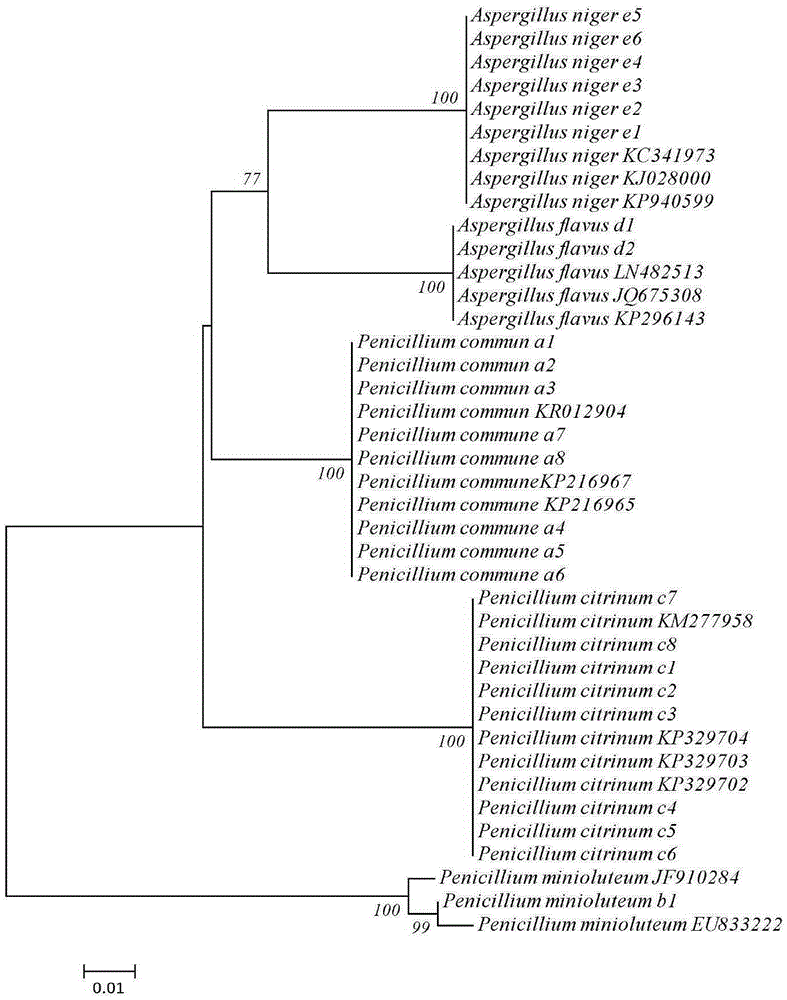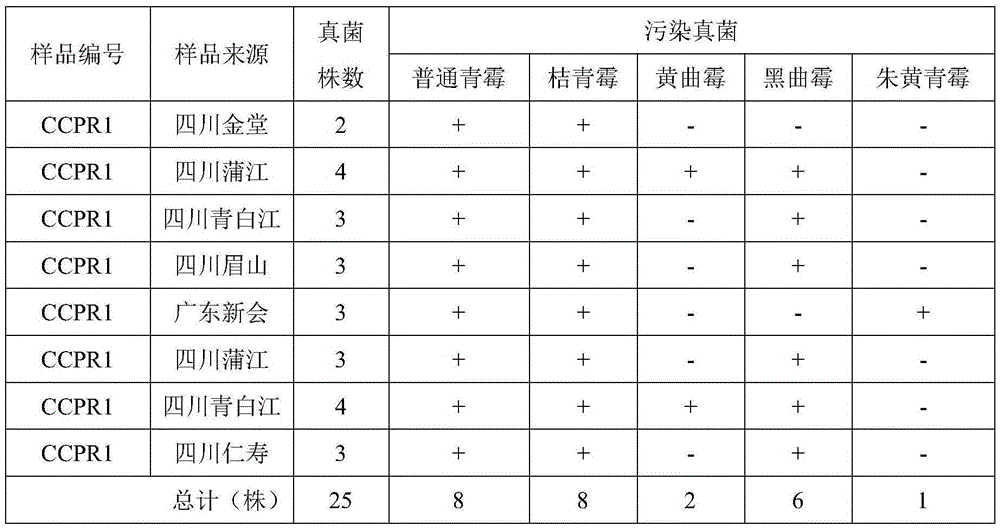Method for improving dried orange peel flavonoid content by using aspergillus flavus
A technology of Aspergillus flavus and dried tangerine peel, which is applied in the field of increasing the content of tangerine peel flavonoids, can solve the problems of high cost, long time required, etc., and achieves the effects of strong antioxidant activity, promotion and improvement, and good application prospects.
- Summary
- Abstract
- Description
- Claims
- Application Information
AI Technical Summary
Problems solved by technology
Method used
Image
Examples
Embodiment 1
[0023] Embodiment 1 The present invention improves the method for orange peel flavonoid content
[0024] 1. Samples and materials
[0025] 1 sample information
[0026] See Table 1 for sample information. The sample used in the experiment was identified by Professor Yan Zhuyun of Chengdu University of Traditional Chinese Medicine as the dried and mature peel of the Rutaceae plant Citrus reticulata Blanco and its cultivars.
[0027] Table 1 Experimental sample information
[0028] Sample serial number
species name
Latin name
source
CCPR1
Big red pouch
Citrus reticulata 'Dahongpao'
Sichuan Jintang
2014.11
CCPR2
Big red pouch a
Citrus reticulata Dahongpao’
Sichuan Pujiang
2014.11
CCPR3
Big red pouch
Citrus reticulata Dahongpao’
Sichuan Qingbaijiang
2014.11
CCPR4
Big red pouch
Citrus reticulata Dahongpao’
Meishan, Sichuan
2009.05
CCPR...
Embodiment 2
[0077] Embodiment 2 The method (Aspergillus flavus) that the present invention improves orange peel flavonoid content
[0078] 1 Samples and materials
[0079] 1.1 orange peel
[0080] Scarlet Citrusreticulata
[0081] CCPR2 gown a Dahongpao’Sichuan Pujiang 2014.11
[0082] The sample was identified by Professor Yan Zhuyun of Chengdu University of Traditional Chinese Medicine as the dried and mature peel of the Rutaceae plant Citrus reticulata Blanco and its cultivars.
[0083] 1.2 Strains
[0084] Aspergillus flavus CGMCC No.3.6422 and Aspergillus flavus CGMCC No.3.6151 are both from CGMCC (China General Microorganism Culture Collection and Management Center).
[0085] 2. Processing method
[0086] Sterilization: get 15 grams of tangerine peel samples and spread them on the bottom of the petri dish, and ultraviolet rays (the intensity of the ultraviolet rays are 90 μW / cm 2 ; the irradiation distance is 25-30cm) to sterilize for 30 minutes, turn over and continue to irr...
Embodiment 3
[0100] Embodiment 3 The present invention improves the method (flavonoid) of tangerine peel flavone content
[0101] 1 Samples and materials
[0102] 1.1 orange peel
[0103] Scarlet Citrusreticulata
[0104] CCPR2 gown a Dahongpao’Sichuan Pujiang 2014.11
[0105] The sample was identified by Professor Yan Zhuyun of Chengdu University of Traditional Chinese Medicine as the dried and mature peel of the Rutaceae plant Citrus reticulata Blanco and its cultivars.
[0106] 1.2 Strains
[0107] Aspergillus flavus CGMCC No.3.6422 and Aspergillus flavus CGMCC No.3.6151 are both from CGMCC (China General Microorganism Culture Collection and Management Center).
[0108] 2. Processing method
[0109] Sterilization: get 15 grams of tangerine peel samples and spread them on the bottom of the petri dish, and ultraviolet rays (the intensity of the ultraviolet rays are 70 μW / cm 2 ; the irradiation distance is 25-30cm) to sterilize for 30 minutes, turn over and continue to irradiate for...
PUM
 Login to View More
Login to View More Abstract
Description
Claims
Application Information
 Login to View More
Login to View More - R&D
- Intellectual Property
- Life Sciences
- Materials
- Tech Scout
- Unparalleled Data Quality
- Higher Quality Content
- 60% Fewer Hallucinations
Browse by: Latest US Patents, China's latest patents, Technical Efficacy Thesaurus, Application Domain, Technology Topic, Popular Technical Reports.
© 2025 PatSnap. All rights reserved.Legal|Privacy policy|Modern Slavery Act Transparency Statement|Sitemap|About US| Contact US: help@patsnap.com



